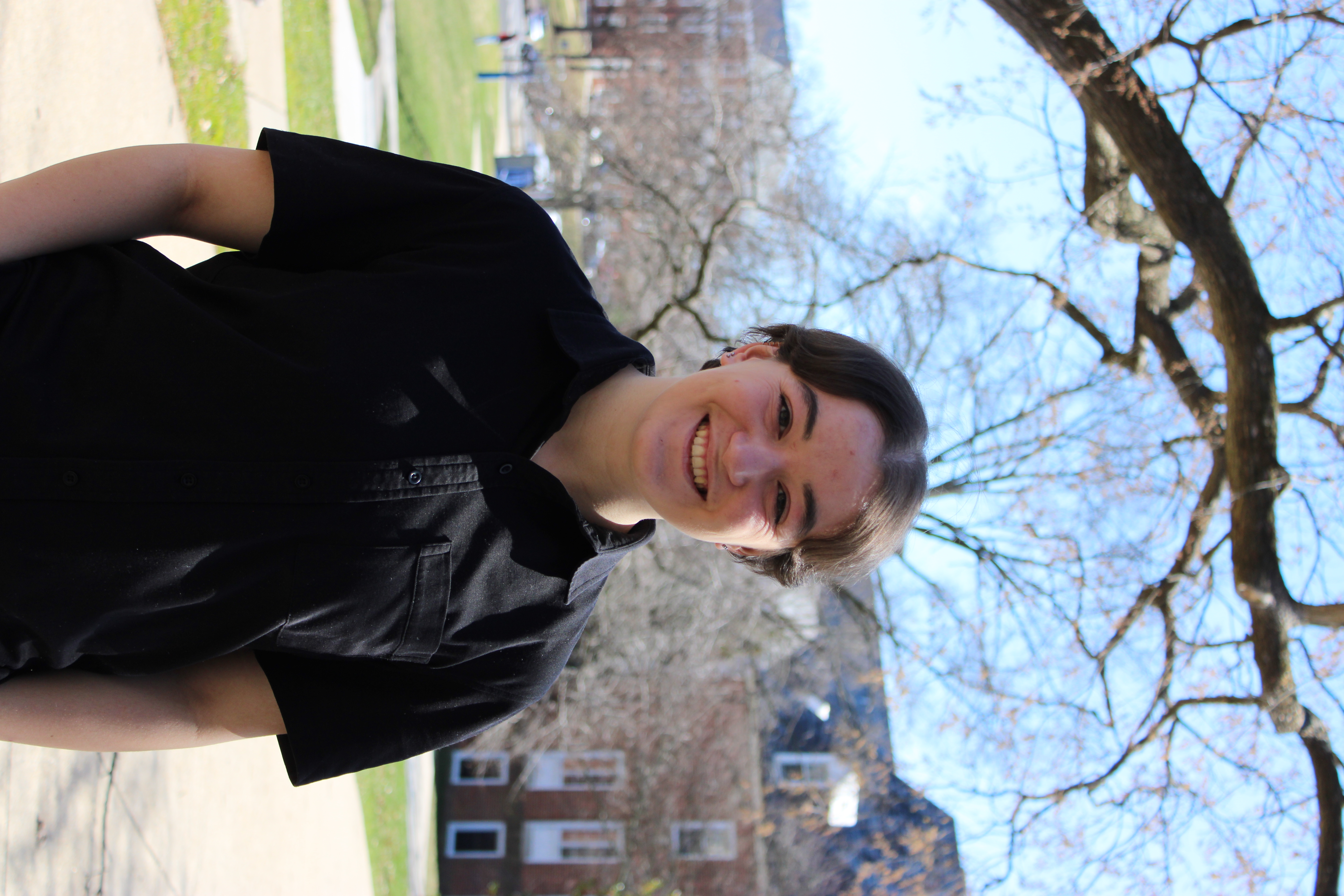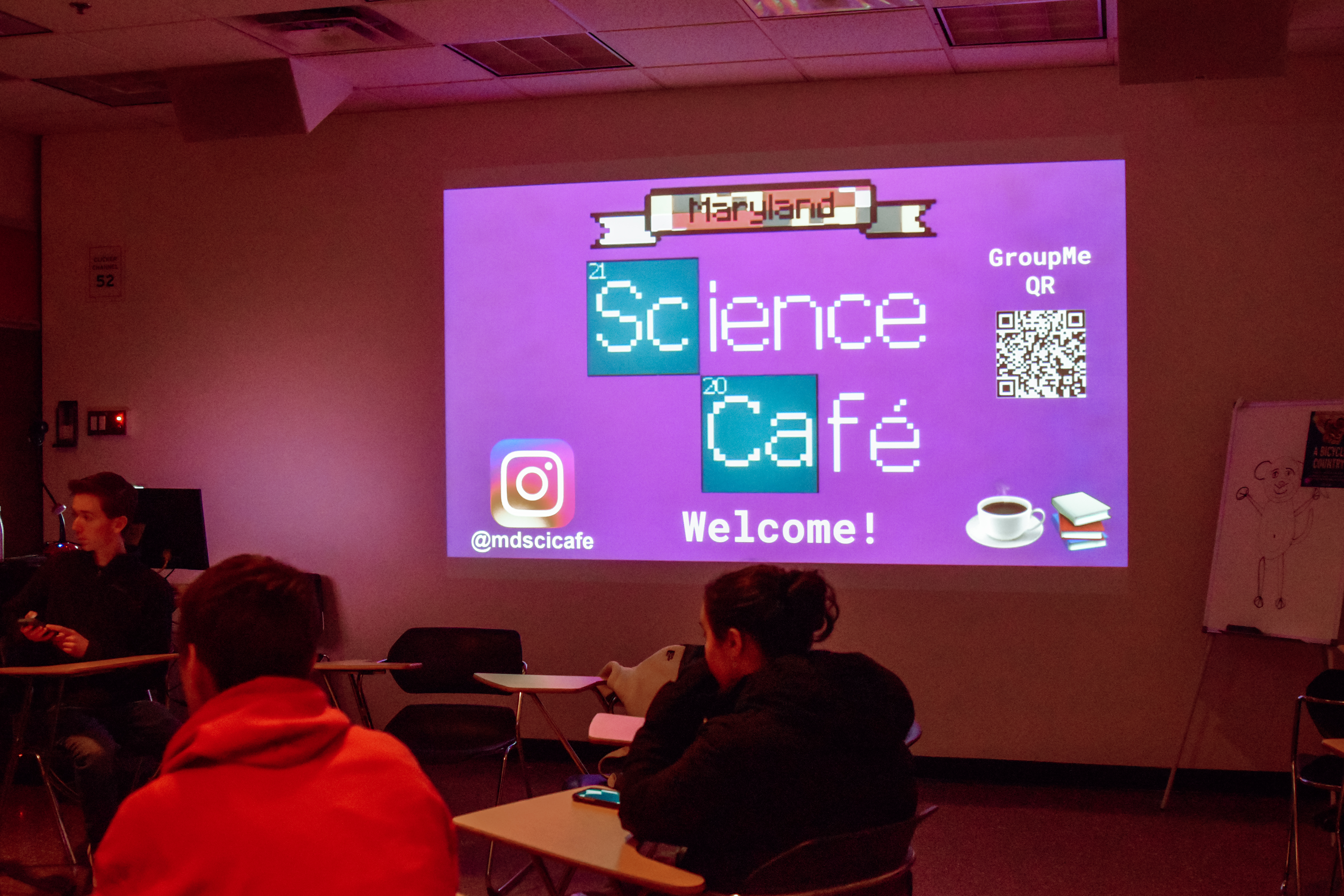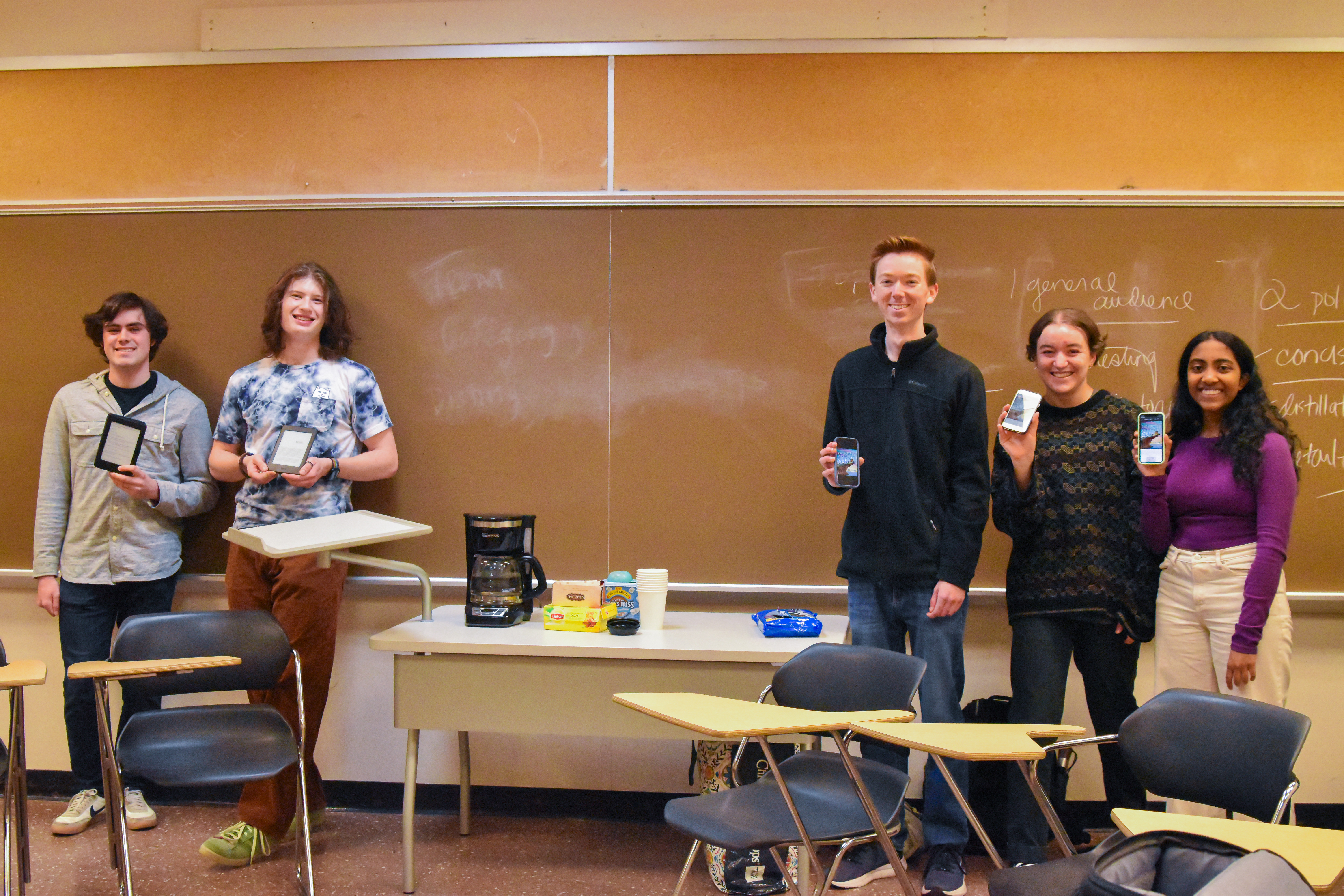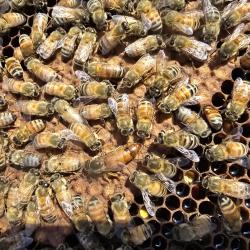Gravitating Toward Science and Stories
While pursuing a double degree in physics and astronomy, senior Madeline Lessard is also organizing a space for fellow STEM students interested in broadening their literary horizons.
Growing up, Madeline Lessard loved watching documentaries.

One of her favorite television programs was NOVA, the long-running popular science series. Whenever Lessard heard the show’s iconic theme song, she would run to her TV in anticipation—ready to spend the next hour with her eyes glued to the screen.
Interested in learning new things and understanding how the world worked, she was instantly hooked to the research featured in each NOVA episode.
“I loved the way it showed people actively doing science. Seeing the questions left unanswered at the end of an episode made me realize that I could help pursue those answers,” Lessard explained. “And it was always the astronomy episodes in particular that piqued my interest in this way.”
What also pulled Lessard in for the full 60 minutes was the masterful storytelling behind the science. Like a good book, NOVA skillfully wove a narrative of mystery, action and resolution that she couldn’t stop thinking about.
Years later, Lessard still thinks about how NOVA helped her fall in love with science and astronomy. She believes the show’s uniquely nuanced depiction of science played a big role in how she views STEM research today.
“NOVA really made a difference to the younger me. It was more than just displaying facts and statistics on a screen,” said Lessard, who is now a senior physics and astronomy double-degree student at the University of Maryland. “It was the writing, storytelling and perspective that helped me understand the more complicated parts of science and inspired me to take on those challenges myself. The show really got me thinking about the real possibility of becoming an astronomer from a young age.”
Exploring exoplanets and ‘water worlds’
Now, Lessard is wholeheartedly pursuing her dreams in College Park, as an active undergraduate researcher in Associate Professor of Astronomy Eliza Kempton’s group. Since 2021, Lessard has been studying exoplanets (planets that orbit stars other than the sun) and their atmospheres.
“I primarily focus on atmospheric modeling, using computers to analyze temperature structures and generate theoretical models of the atmosphere,” Lessard explained. “We use this information to predict what a faraway planet could look like—whether there is more water, hydrogen or helium in the atmosphere, for example—and compare those predictions with actual findings.”
The team’s work also aims to improve the accuracy of other types of modeling, such as calculations of a planet's interior structure, and helps astronomers figure out what temperatures, pressures and other conditions can be detected by powerful tools like the James Webb Space Telescope.
“Madeline has been working with my group since her freshman year and started her research with us during the pandemic over Zoom,” Kempton said. “She has gained so much expertise over her time here. She led research efforts on ‘water world’ exoplanets and was the second author for a recent paper on the subject. And now she’s working on her own exciting new independent project for her honor’s research.”
For Lessard, co-authoring the “water worlds” paper in The Astrophysical Journal and another publication on atmospheric thickness were her first formal attempts at communicating science to an external audience. Recalling the NOVA episodes she grew up watching, Lessard appreciates what goes into translating research into a cohesive, well-organized narrative that others can understand. As she works on her newest project, she hopes that she can grow to become a scientist who can contribute meaningfully to both existing research and future ideas through her papers.
“Some people don’t think we need good writing or communication skills in science, but that’s wrong,” Lessard said. “Being able to communicate really complex ideas to others is crucial to being a scientist, whether you’re trying to explain your work to other scientists or to the general public.”

STEM, stories and a cup of coffee
Lessard’s interest in effective storytelling extends outside the lab, too. As president of the Maryland Science Cafe, she leads a book club with the organization’s treasurer, electrical engineering senior Daniel McLawhorn, that caters to students interested in casual discussions about literature over coffee, tea or light refreshments.
“It all started for me when I was a freshman during the pandemic. I wanted human connection and a little break from all the STEM classes I was taking,” said Lessard, who took over the leadership position last year. “I missed being able to talk about books and storytelling, which isn’t usually part of my course load. The club seemed like the perfect place to get in touch with other students who shared that interest.”
Participants in the Maryland Science Cafe gather every other week and spend an hour discussing the book they voted for at the beginning of the semester. Although books of all genres have been nominated and read, stories that feature science and technology strike a chord with many members of the group.
“Many of us are STEM students, so we tend to gravitate toward stories with science in them,” Lessard said. “I think we can offer a lot of unique insights into science fiction as STEM researchers and a lot of the books we’re reading have parallels to real life. I’ve always believed that science and society share a kind of infinite feedback loop. Sharing our thoughts and interpretations re-establishes this feedback loop and helps us reconnect ourselves as scientists to the societies we’re part of.”

Lessard also encourages STEM outreach efforts to the general public to maintain this important connection. Her latest campaign is to establish a ‘Cafe Scientifique’ at UMD with McLawhorn, a project she says was originally an idea conceived by the club’s original founders who graduated a few years prior during the COVID-19 pandemic.
“Cafe Scientifique is a concept that originated in Europe but it’s something I wanted to recreate here at UMD,” Lessard explained. “It’s the idea of having a place—like a cafe—where anyone can just come in, have a cup of coffee and just discuss the latest in science and tech. There’s no pressure because it’s not in a classroom and you don’t need to be a scientist to be a part of it. It’s a place where all kinds of perspectives and ideas meet.”
So far, UMD’s Cafe Scientifique has attracted guest speakers like Associate Professor of Chemical and Biomolecular Engineering Ganesh Sriram (also the organization’s advisor) and graduate student Arjun Savel, a member of Kempton’s lab group. Lessard hopes to spotlight guest speakers’ research in a way that’s accessible to non-STEM and STEM students alike—a goal that she hopes she will carry on even after she graduates in spring 2024.
“Science is collaborative. It needs multiple points of view to advance,” Lessard said. “I want to generate discussion about the direction and societal impact of today’s science trends.”







